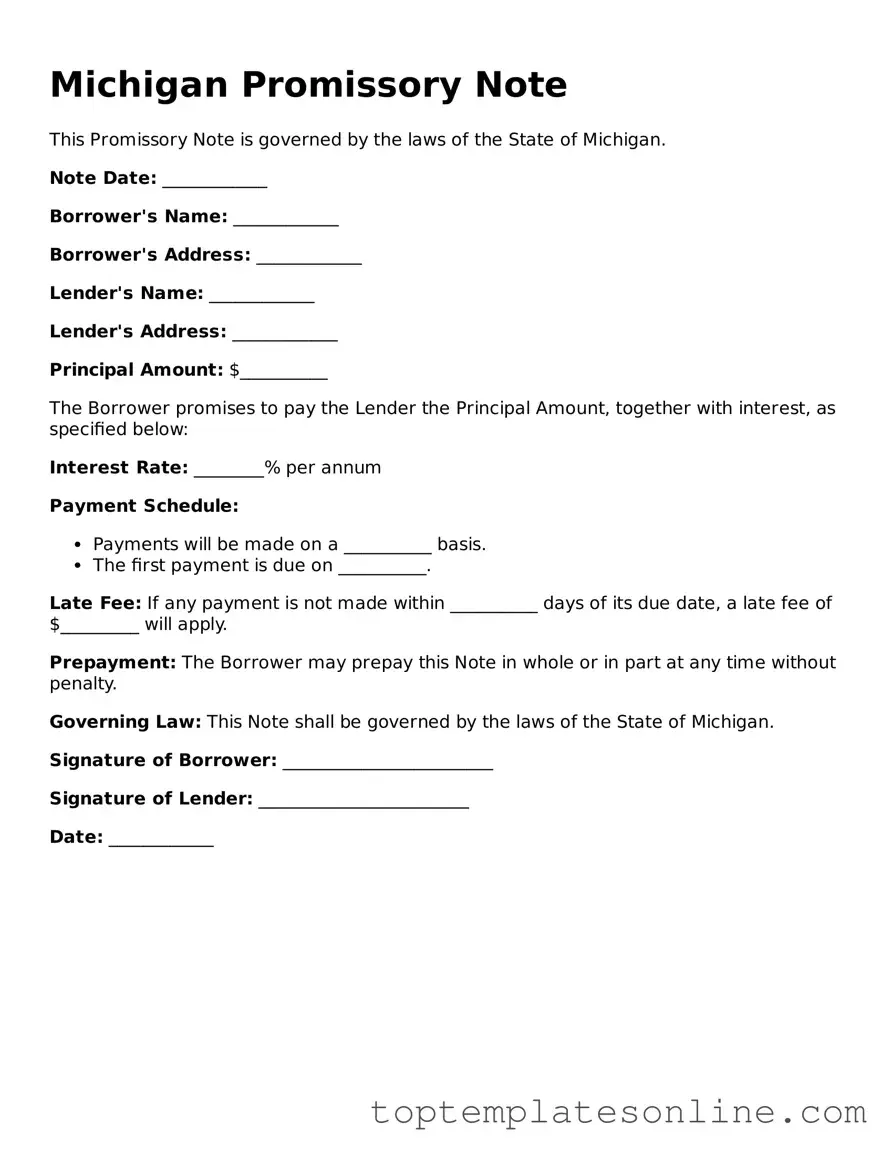When it comes to securing loans or establishing a clear agreement between a borrower and a lender, the Michigan Promissory Note form plays a crucial role. This straightforward document outlines the borrower's promise to repay a specified amount of money, often detailing the terms of repayment, interest rates, and any associated fees. It serves as a legal instrument that not only fosters trust between parties but also provides clarity on the obligations involved. The form typically includes essential elements such as the names and addresses of both the borrower and lender, the principal amount borrowed, and the repayment schedule. Additionally, it may address what happens in the event of default, ensuring that both parties understand their rights and responsibilities. By using this form, individuals and businesses can navigate the lending process with confidence, knowing that they have a solid framework in place to protect their interests.
